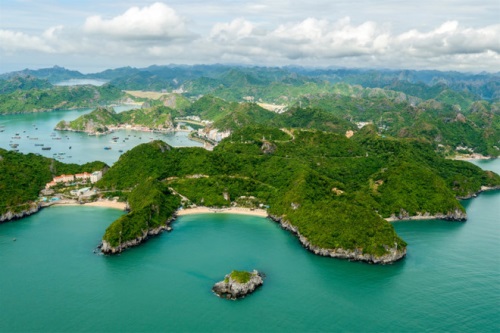Biosphere reserves in general, those in coastal and island areas in particular are established by a country and recognized by UNESCO’s Man and Biosphere Programme (MAB). A biosphere reserve is the combination of biodiversity and typical cultural and economic elements of a nation, and helps boost solutions to reconciling biodiversity preservation with sustainable development in each region.
According to research centres around the world, a biosphere reserve must include three zones, namely core zone, buffer zone, and transition zone. The core zone is intended for biodiversity preservation and supervision, research and education activities which must have a minimum impact on the ecosystems; each reserve might have one or many core zones. The buffer zone often surrounds the core zone and is used for developing economic fields on the basis of ecological sustainability, such as tourism, environmental education, etc. The outermost transition zone is designed for sustainable economic development and the place where scientists, managers, cultural cadres and businessmen meet and work with one another to manage and sustainably protect the natural resources.
 |
| Cat Ba Biosphere Reserve (photo: baoquangninh.com.vn) |
Up to now, Vietnam has owned 6 recognized coastal and island biosphere reserves across the country, namely Cat Ba, Red River Delta, Can Gio Mangrove Forest, Cu Lao Cham Marine Park, Ca Mau Cape, and Kien Giang coastal and island area. According to UNESCO’s assessment, Vietnam’s biosphere reserves are extremely diverse and have greatly contributed to reducing erosion, fertilizing land, harmonizing climate, and lessening water and air pollution. Notably, the mangrove forests have created green walls that protect coastal areas, reduce the damage caused by sea water rise, wave and storm, and adapt the climate change. At the same time, biosphere reserves have made contributions to studying ecosystems and genetics as well as maintaining and creating sustainable livelihood of coastal people. Besides, coastal biosphere reserves have created a favourable condition for sharing and exchanging the knowledge on sustainable development and protection of natural resources, contributing to fostering socio-economic development associated with the settlement of global existing challenges, such as poverty, over-exploitation of natural resources, environment pollution and climate change.
To continue to promote the values of coastal and island biosphere reserves to human life, our Party and State have paid special attention to and adopted various measures to sustainably develop those reserves, which has been expressed in relevant legal documents, such as Vietnam’s Marine Strategy, the Law on Environmental Protection, the Law on Biodiversity, the Law on Natural Resources and Environment of Sea and Islands, etc. Those have provided an important legal basis for sectors, localities and forces’ implementation. Accordingly, the Ministry of Science and Technology has closely cooperated with the UNESCO’s Vietnam MAB National Committee and localities in implementing national-level scientific studies on combining preservation of biodiversity with socio-economic development, in aligning preservation of the biosphere reserves with proper exploitation and use of those reserves, and in actively seeking for new development models, thereby contributing to the sustainable development of localities and the country.
Nguyen Van Su